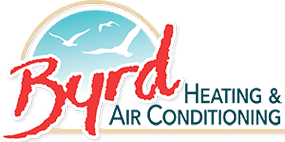You rely on your furnace to keep your home comfortably warm when the nights get chilly here in the Savannah area, which is just one of the reasons why an annual furnace inspection from a knowledgeable HVAC pro is so important. A professional furnace inspection also provides a number of other key benefits.
- When your furnace is properly maintained, it operates efficiently, which reduces fuel and energy waste and lowers your annual heating costs.
- An annual tune-up by a qualified and experienced technician can help extend the life of your heating equipment by preventing unnecessary damage to vital system components.
- During a routine maintenance visit, your HVAC specialist can identify and address small problems before they progress into more serious issues that require costly repairs or replacements.
- Regular maintenance can help prevent safety issues, such as the risk of fire, and the dangers posed by unhealthy gas fumes, and lethal carbon monoxide leaks.
What’s Involved in a Furnace Inspection
The steps performed during a routine furnace inspection can vary, depending on the company you hire, but as a general rule, you should expect that an experienced professional will include the following tasks:
- Checking the vent system for leaks or blockages.
- Examining the heat exchanger for signs of corrosion and cracks or separations. A damaged heat exchanger can allow deadly carbon monoxide to escape.
- Checking the blower and cleaning its components. This includes removing the blower wheel to ensure that it’s free of dirt and debris.
- Testing for a tight seal on the blower access door.
- Checking the air intake grills for blockages.
- Performing an amp-draw test on the blower motor and comparing the results to the unit’s listed specifications. This can reduce the risk of fire, and help extend the life of the blower components.
- Checking the burner for proper ignition and testing the flame sensor for accurate operation.
- Lubricating all the motor’s moving parts to reduce friction. When there’s friction, the motor has to work harder, which requires more electricity, and it could also result in a premature failure.
- Checking that all electrical connections are tight and examining the wiring for signs of rust and corrosion.
- Testing the thermostat calibration. When the thermostat is calibrated correctly, your home will be more comfortable. It can also save you money on your energy bills by preventing overheating.
- Examining the flue for obstructions. If the toxic fumes that result from combustion can’t escape up the flue due to a blockage, your indoor air quality will suffer.
- Testing for the unit’s safety controls. This should include checking the high limit control, which prevents the furnace from overheating and reduces the risk of fire.
- Checking the belts for signs of wear or cracks.
- Testing that the system’s startup cycle is functioning correctly.
- Checking the furnace’s air filter. A dirty filter can reduce the unit’s efficiency by restricting needed air flow, and damage vital system components over time.
Gas, Oil Furnaces Require a Little More Checking
If you have an oil or gas furnace, your technician should also perform the following tasks:
- Examining the thermocouple and replacing it if necessary. This helps eliminate the risk of an explosion.
- Analyzing the combustion gases and comparing the results to your furnace’s specifications.
- Checking that the pilot or electronic ignition is functioning properly.
- Testing that the burner is operating correctly and cleaning it if necessary.
- Checking the fuel lines for leaks that could pose a fire hazard or allow harmful fumes to escape.
- Testing the manifold gas pressure to ensure that the correct amount of fuel is reaching the burners.
Steps You Can Take Yourself
There are some steps that you can take after your furnace inspection to help maintain your heating system’s efficiency. They include:
- Keeping your blower motor bearings well lubricated. If the unit has oil cups, add a drop to each every once in a while.
- Keeping the blower unit free of dirt by vacuuming it periodically, but make sure you shut off its circuit breaker before you do so.
- Testing your exposed ductwork joints for air leaks. Hold up a lit stick of incense to the joints while the furnace is running to locate air leaks. Then, seal up these areas using metal tape.
- Checking your thermostat’s accuracy. Put an outdoor thermometer on the wall next to the thermostat. Run the furnace for several minutes, and then compare the thermometer’s reading to the displayed room temperature.
- Cleaning or changing your furnace filter once a month throughout the heating season.
To learn more about what to expect from a heating professional during a routine furnace inspection, contact us at Byrd Heating and Air Conditioning.
